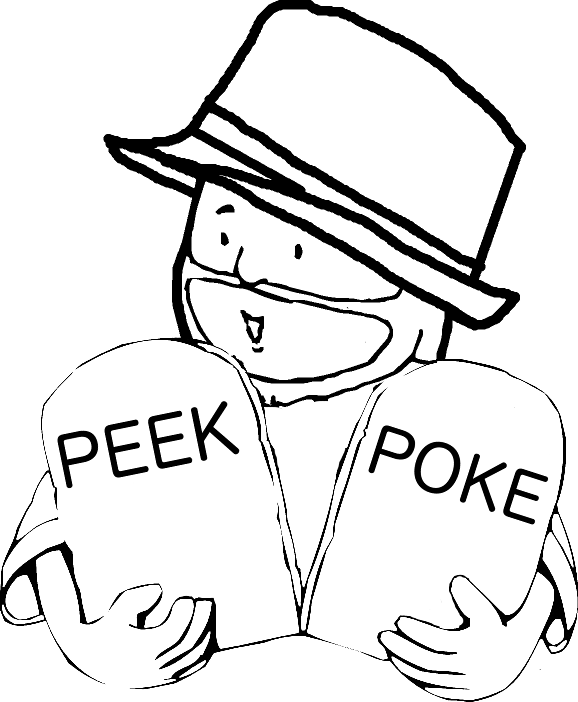Disclaimer
First of all, I am neither a lawyer nor a trained ethicist. The following are a list of thought experiments related to “hacking” (i.e., testing the limits of) the law. Unless otherwise noted, I have not done any research to confirm whether or not the questions posted herein are either novel or have already been answered. Although the following contains some material related to computers, I have tried my best to write it in such a way as to be accessible to the widest audience.
Copyrighting a Number
Is it legal?
It is obviously legal to copyright an artistic work, like a digital photo. A digital photo, however, is really stored on a computer’s hard drive as a sequence of numbers, each representing the color of a dot in the picture. This sequence of numbers could be summed such that it amounts to a single, unique number. Would it be legal for one to give that number—which uniquely represents the copyrighted image—to a friend? The friend could then divide that number back into its sequence on the hard drive, thus reconstructing the original copyrighted picture. If copyrighting numbers is not legal, then I do not see why what I just described would not be legal.
The issue is actually a bit more complicated than it seems.
It is entirely possible that the method used to convert the digital picture to a single number could be slightly modified (e.g., by adding 1 to the resulting number). If the recipient of the number does not know that this was done then the resulting reconstructed picture will look like noise. If the recipient knows to subtract 1 from the number before reconstructing the picture, however, the picture will be exactly the same as the copyrighted picture.
To add even more complication, it is entirely possible that, by adding 1 to the number, the improperly decoded picture might in fact become a completely different copyrighted picture.
Example
- Person X has a copyrighted picture, called picture A, that he/she legally owns.
- X converts the picture to a number, $n$.
- X sends the number $n+1$ to person Y.
Case 1:
- Y converts the number $n-1$ back to a picture, resulting in picture A.
Case 2:
- Y converts the number $n$ to a picture, resulting in a completely different picture B.
- Picture B turns out to be copyrighted by person Z.
- Neither person X nor person Y have ever even seen picture B before.
At what point is copyright lost?
Related to copyrighting a number is the following.
When the picture is represented as a sequence of numbers (representing the colors of the individual dots in the picture), it is possible to increment each of the colors of the individual dots. For example, let’s say the dot in the upper left corner of picture A is currently black. We could iteratively increment the color of that dot so that it eventually becomes white (going through a sequence of lightening grays in the process). We could even increment all of the dots in the picture at the same time.
Now, let’s say picture A is a photo of the Mona Lisa of which we do not own the copyright. Picture B is a photo of the Empire State Building that you took and of which therefore own the copyright. Both of the pictures have the same dimensions; therefore each dot in picture A has a corresponding dot in picture B.
Now, we iteratively increment the dots in A such that they all move toward the color of their corresponding dot in picture B. Let’s call the result of this picture C. At the beginning, C will look exactly like picture A. At the end, C will look exactly like picture B. In the middle of the process, C will look like a linear combination of A and B.
Question 1
At what point during the “morph” from A to B will the “copyright” of picture C transition from that of picture A to picture B?
Question 2
Is there any point during the process that picture C might not be protected by either picture A or picture B’s copyrights?
 PoC‖GTFO
PoC‖GTFO Twitter
Twitter LinkedIn
LinkedIn GitHub
GitHub XTerm
XTerm
 Esperanto
Esperanto
 עברית
עברית
 Medžuslovjansky
Medžuslovjansky
 Русский
Русский